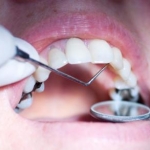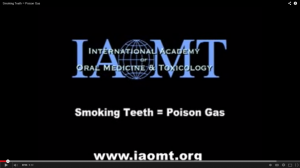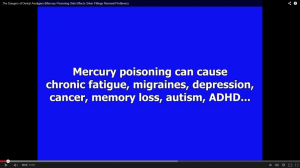By Eric Uram, SafeMinds Executive Director
 In my 50 plus years on this planet, I’ve been to the dentist about 100 times. Routine stuff mostly; I’ve never had the same degree of problems our first president did (George Washington had notoriously bad teeth). All the pearly whites you see in my mouth are mine. Those dental visits—along with good oral hygiene, a decent diet, and good genetics—have kept me from the need for false teeth.
In my 50 plus years on this planet, I’ve been to the dentist about 100 times. Routine stuff mostly; I’ve never had the same degree of problems our first president did (George Washington had notoriously bad teeth). All the pearly whites you see in my mouth are mine. Those dental visits—along with good oral hygiene, a decent diet, and good genetics—have kept me from the need for false teeth.
Yet I still have mixed feelings about the several times I spent with a drill whining in my ear as the dentist prepared a tooth for restoration to fix the damage caused by decay that had attacked the surface and was destroying the tooth. Without such a fix that decay could have damaged the root and caused even bigger problems—like having no teeth.
But during my childhood, and for over a century, the preference has been for using “silver” fillings to replace areas in a damaged tooth. Silver amalgams have been used in dentistry since before the Civil War. And this shiny metal material the dentist inserts into the area the drill removed is problematic, to say the least.
I didn’t find out until ten years after I had my first cavity filled that “silver” material is actually comprised of about 50% mercury.
Even more shocking is what happens during amalgam placement and during the time it remains in your mouth: liquid mercury droplets is squeezed out of the amalgam into your mouth when it is pushed into place in the tooth as the dentist places the amalgam, mercury from the fillings off-gasses the entire time it is present in one’s mouth where you breathe it in, and during both placement and removal of the amalgams people accumulate higher levels of mercury in their bodies.
It is well established that dental amalgam can cause health impacts in people who have had it placed in their mouths – especially if they have multiple teeth restored. For this reason, Scandinavian countries have banned its use.
Cumulative exposure to mercury from amalgams can cause:
For people sensitive to mercury, and for a woman during pregnancy, mercury amalgam can cause even greater problems.
Because of this, ending amalgam use has been a priority in other countries including Norway, Sweden, and Denmark. The Minamata Convention on Mercury, completed in 2013, spells out international actions necessary for a phasedown on mercury use in dentistry.
The United States was the first nation to ratify the treaty, making the goal of mercury reduction part of American domestic policy.
Even before the Minamata Convention, the FDA committed to a decision about the safety of amalgam in 2011 and the EPA indicated in 2010 they would shortly create a rule to address pollution from amalgam that was coming from dental offices.
But now the American government is betraying consumers again.
The FDA has failed in their commitment to act by the promised deadline on the safety of mercury amalgam as a restorative material and the EPA is on the verge of breaking their promise to get dentists to address mercury coming from their offices as well.
Griffin Cole, DDS, President of the International Academy of Oral Medicine & Toxicology stated,
“We have banned mercury in disinfectants, thermometers, and many other consumer products… There is no magic formula that makes mercury safe when it’s put into our mouths. It’s inexcusable to use mercury in dental fillings when there are much safer alternatives.”
So, when will the United States end the promotion of amalgam and require dental offices to dispose of the mercury removed from mouths properly and safely when older restorations are replaced?
In this day and age when we know that mercury is devastating to human health and we know that humans will get incidental exposures from food, air and water, no purposeful exposure to mercury should EVER occur.
Over the last five years I’ve had three fillings replaced—one with a crown (because the filling had caused the tooth to crack) and two with replacement materials made from composite ceramics. Those teeth now look more natural, they are not exposing my body to toxic chemicals, and they should last me as long as I need my teeth.
My friend Laura replaced the mercury amalgams in her mouth and found a dramatic improvement to her health. Her thyroid, diagnosed as hypoactive, started working properly again and she was able to stop taking daily thyroid medication. What doctors had diagnosed as an endocrine disruption turned out to be mercury poisoning.
But replacing mercury amalgam fillings can also be dangerous. I have friends who have had entire mouthfuls of mercury amalgam replaced at the same time, spending thousands of dollars to do so. He decided to replace them all at once because he was experiencing serious health issues. Another had hers replaced because of her long-term concerns about the mercury and potential for health problems later in life (Alzheimer’s, Parkinson’s, or other neurological diseases).
But it’s actually not advisable to always get every “silver” filling in your mouth replaced at the same time: We now know mass replacement can expose you to a pulse of mercury that can create a toxic overload.
It is often better to remove amalgams from your mouth as soon as is feasible, waiting for them to wear out takes about twenty years per filling. Your dental insurance often covers the cost for replacement fillings, and removing them minimizes overall mercury exposure.
TAKE ACTION:
✔ Read the article Metal Fillings in Your Mouth Could Make You Really Sick from the Campaign for Mercury Free Dentistry for more about these issues.
✔ Contact the EPA and encourage a strong rule now by sending an email or letter, or by calling:
Damon Highsmith
Environmental Protection Agency
Office of Water
4303T,
Washington, DC 20460
Phone: 202 566-2504
Email: [email protected]
✔ Contact the FDA and tell them to listen to scientists and reconsider the safety of amalgam:
Office of the Assistant Secretary for Health (OASH)
Phone: 202-690-7694
E-mail: [email protected]
✔ Reach out to the Consumer Products Safety Commission and let them know about your experiences or concerns regarding amalgam.
Finally, now that you’ve got your civic-minded, change-the-world groove on,
✔Send a message to Secretary of State John Kerry asking him to step up efforts at exceeding the Minamata Convention on mercury and set the standard for safety from mercury containing products like dental amalgam by ending all mercury use in medicine and dental applications.
… and, in light of all this, keep smiling (mercury-free, of course) if you can!
Are you worried about the mercury in your dental amalgams? The mercury in other consumer products? Be sure to follow our blogs as we look into these issues.
Related posts:
How Much Fish is Safe to Eat?
Why Slate Magazine is Out to Lunch
 Eric Uram is the Executive Director of SafeMinds.
Eric Uram is the Executive Director of SafeMinds.





